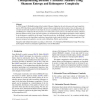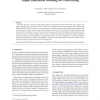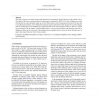CAE
2007
14 years 5 months ago
2007
The viewable sphere corresponds to the space that surrounds us. The evolution of photography and panoramic software and hardware has made it possible for anybody to capture the vi...
CAE
2005
14 years 5 months ago
2005
This paper attempts to define the discipline of Computational Aesthetics in the context of computer science, partly reflecting the contributions and comprehensive discussions of t...
CAE
2005
14 years 5 months ago
2005
Labels effectively convey co-referential relations between textual and visual elements and are a powerful tool to support learning tasks. Therefore, almost all illustrations in sc...
CAE
2007
14 years 5 months ago
2007
CAE
2007
14 years 5 months ago
2007
In this paper, we introduce memory [en]code, a project that evolved through an art+science collaboration. memory [en]code is an interactive tabletop installation that visualizes d...
CAE
2007
14 years 5 months ago
2007
In 1928, George D. Birkhoff introduced the Aesthetic Measure, defined as the ratio between order and complexity, and, in 1965, Max Bense analyzed Birkhoff's measure from an i...
CAE
2007
14 years 5 months ago
2007
The visualization of color images in gray scale has high practical and theoretical importance. Neither the existing local, gradient based methods, nor the fast global techniques g...
CAE
2007
14 years 5 months ago
2007
We present a stipple placement method which provides extra emphasis to image features, especially edges. Our algorithm transforms an image into a regular graph, with edge weights ...
CAE
2007
14 years 5 months ago
2007
This paper presents a model of cloth dyeing using the characteristics of the thread and weave pattern. The proposed dyeing model is based on Fick's second law that defines th...
CAE
2007
14 years 5 months ago
2007
This paper proposes two simple and powerful algorithms to automatically paint Celtic knots with aesthetic colors. The shape of the knot is generated from its dual graph as present...
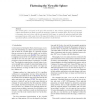

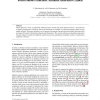
![memory [en]code - Building a Collective Memory within a Tabletop Installation memory [en]code - Building a Collective Memory within a Tabletop Installation](https://www.sciweavers.org/files/imagecache/thumbnail/imagecache/memory_en_code_building_a_collective_memory_within_a_tabletop_installation_CAE_2007.jpg)
